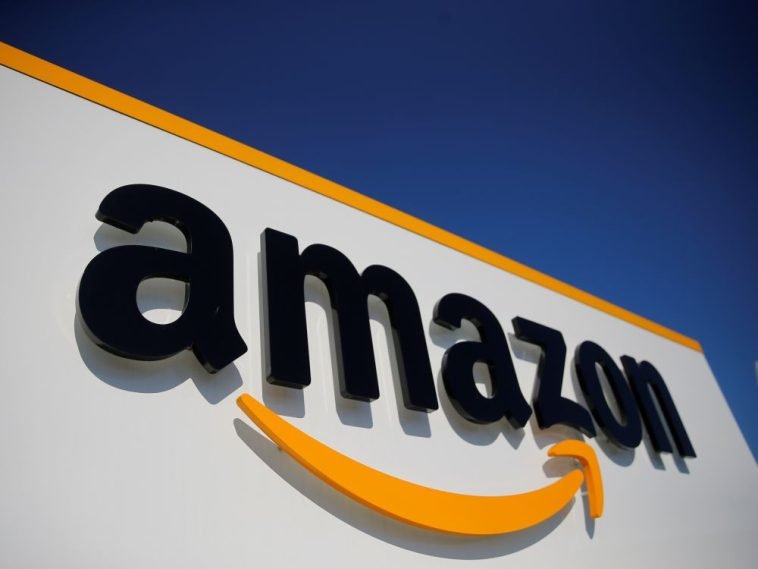Introduction.
So, you’re thinking about buying products from Alibaba and shipping them directly to Amazon FBA (Fulfillment by Amazon) – that’s a fantastic strategy for sellers who want to make the most of Amazon’s massive marketplace.
But there’s a lot to unpack when it comes to getting your products from an international supplier into Amazon’s fulfillment centers, especially if you’re new to the process.
It might seem a little intimidating at first, but once you get a handle on the basics, it can be a smooth process. Plus, mastering this setup could mean better margins, faster turnaround times, and, ultimately, happier customers.
In this guide, I’ll walk through all the key steps to ship from Alibaba to Amazon FBA, including some of the hurdles to watch out for, the pros and cons of various shipping options, and ways to simplify the process.
By the end, you’ll have a clear game plan to make sure your products get from Alibaba to Amazon’s warehouses with as few headaches as possible. Let’s get started!
Why Shipping from Alibaba to Amazon FBA Matters
Buying from Alibaba gives you access to thousands of suppliers and manufacturers, often with very competitive pricing.
Since many of these suppliers are located in China, it can save a lot of money and open up a world of unique product options.
Amazon FBA is an ideal platform for sellers because it takes care of storage, packing, shipping, and even customer service. This frees up time for you to focus on growing your business.
However, shipping products from Alibaba to Amazon FBA isn’t always a straightforward process. For example, you need to understand shipping methods, handle international customs, choose an Amazon-approved freight forwarder, and comply with Amazon’s strict packaging and labelling requirements.
Getting these details right can be the difference between a successful product launch and facing costly delays.
How Do I Ship from Alibaba to Amazon FBA?
1. Find the Right Supplier on Alibaba.
The first step is finding a trustworthy supplier on Alibaba. Since you’ll be shipping the products directly to Amazon, it’s essential to ensure the quality is consistent, and that the supplier understands Amazon’s requirements.
Check supplier ratings, read reviews, and don’t hesitate to ask for samples before placing a larger order. A few key things to ask for include:
- Product Specifications: Make sure you’re clear on what’s included, and confirm any customization options you need.
- Certifications: Ask if the product complies with any necessary regulations, especially if you’re selling in a category that requires them.
- Production Time: Ensure they can meet any deadlines you have, especially if you’re launching a new product.
- Shipping Terms: Get details on the Incoterms they offer (more on that next!).
2. Choose Shipping Terms: Understanding Incoterms.
Incoterms (like FOB, EXW, and DDP) define who is responsible for costs and risks at each step of the shipping journey. Here’s a quick rundown of the most common ones you might encounter:
- FOB (Free on Board): Your supplier covers costs until the goods are loaded onto a shipping vessel. After that, you’re responsible for costs and risks.
- EXW (Ex Works): You cover all shipping costs from the factory to Amazon’s warehouse. This option provides the least support from the supplier.
- DDP (Delivered Duty Paid): The supplier or freight forwarder covers all shipping costs and takes on all responsibility until the goods reach Amazon. DDP is usually the simplest option for new sellers, but it can be more expensive.
3. Hire a Freight Forwarder
A freight forwarder helps you manage international shipping logistics, which includes arranging transportation, handling customs paperwork, and even helping with Amazon’s labeling requirements. Some popular freight forwarders that work well with Alibaba to Amazon FBA shipments include:
- Flexport
- Freightos
- DHL Global Forwarding
When choosing a freight forwarder, make sure they are familiar with Amazon FBA requirements. Many forwarders also offer DDP services, meaning they’ll handle everything from Alibaba to Amazon’s warehouses.
4. Choose Your Shipping Method: Air or Sea?
Deciding whether to ship by air or sea depends on a few factors: your budget, the product’s weight, and how quickly you need the items to reach Amazon. Here’s a comparison of the two:
- Air Freight: This is the fastest option, often taking a week or less. However, it’s also the most expensive, especially for large or heavy items. If you’re shipping a small quantity or have a tight timeline, air freight might be worth the cost.
- Sea Freight: Much cheaper for larger shipments but takes significantly longer – sometimes up to a month or more. If you have a larger quantity and can wait, sea freight is usually the most cost-effective option.
5. Make Sure Your Products Meet Amazon’s Requirements.
Amazon has strict guidelines on product labeling, packaging, and shipping. Make sure your supplier understands Amazon FBA’s requirements or work with your freight forwarder to inspect your products for:
- Labeling: Every unit needs a barcode (either UPC, EAN, or Amazon’s FNSKU label).
- Packaging: Products must be securely packaged to avoid damage during transit.
- Carton Requirements: Amazon has specific rules on box sizes, weights, and packing material.
6. Clear Customs and Pay Duties.
When importing goods into the U.S., you’ll need to clear customs and pay any necessary import duties or taxes.
Your freight forwarder can assist with this, but it’s important to budget for these additional costs. If you’re shipping a high-value item, consider working with a customs broker to simplify the process.
7. Monitor the Shipment.
Once your products are on their way, keep track of the shipment status. Most freight forwarders offer online tracking, so you can monitor the progress.
When the shipment arrives at Amazon, it can take a few days for the inventory to become available for sale.
Pros and Cons of Shipping from Alibaba to Amazon FBA
Pros:
- Cost Savings: Alibaba offers affordable wholesale pricing, and direct-to-Amazon FBA shipping reduces storage costs.
- Efficient Fulfillment: Amazon handles storage, packing, shipping, and even customer service.
- Scalability: Once you’re set up, scaling your business with additional products becomes more manageable.
Cons:
- Shipping Complications: International shipping involves customs, import duties, and extensive documentation.
- Quality Control: Ensuring quality from afar can be tricky; it may require third-party inspections.
- Inventory Management: Any delays in shipping or customs can lead to stockouts, hurting your Amazon rankings.
FAQs
Q1: Can I ship directly from Alibaba to Amazon FBA?
Yes, you can! Just ensure that your supplier is familiar with Amazon’s FBA requirements or work with a freight forwarder who can help manage the process.
Q2: How much does it cost to ship from Alibaba to Amazon FBA?
The cost varies depending on the shipping method, distance, product weight, and customs duties. Air freight is more expensive but faster, while sea freight is slower but more affordable.
Q3: Do I need a customs broker?
It depends on the shipment’s value and complexity. Many sellers use a customs broker to handle paperwork, while others let their freight forwarder manage it.
Q4: What if my products don’t meet Amazon’s standards?
Amazon may refuse to accept shipments that don’t comply with their requirements. Consider working with a third-party inspection service in China to check the quality before shipment.
Q5: How long does it take to ship from Alibaba to Amazon FBA?
By air, shipping can take about 7-10 days. By sea, it may take 20-40 days, depending on the location.
Wrapping Up.
Shipping from Alibaba to Amazon FBA might seem like a lot to manage, but with some research and the right partners, you can make the process smoother.
Alibaba is full of opportunities, and Amazon FBA makes it easy to scale up your business without handling inventory yourself.
Now that you know the basics, what steps are you most excited to start with for your first shipment?





GIPHY App Key not set. Please check settings